Balsamic Reduction Glaze is the perfect recipe to memorize (1 ingredient, 1 step!) and keep in your back pocket. It can transform any home-cooked meal into restaurant quality. With such a simple process and a delicious flavor, you’ll want to make this recipe all the time!
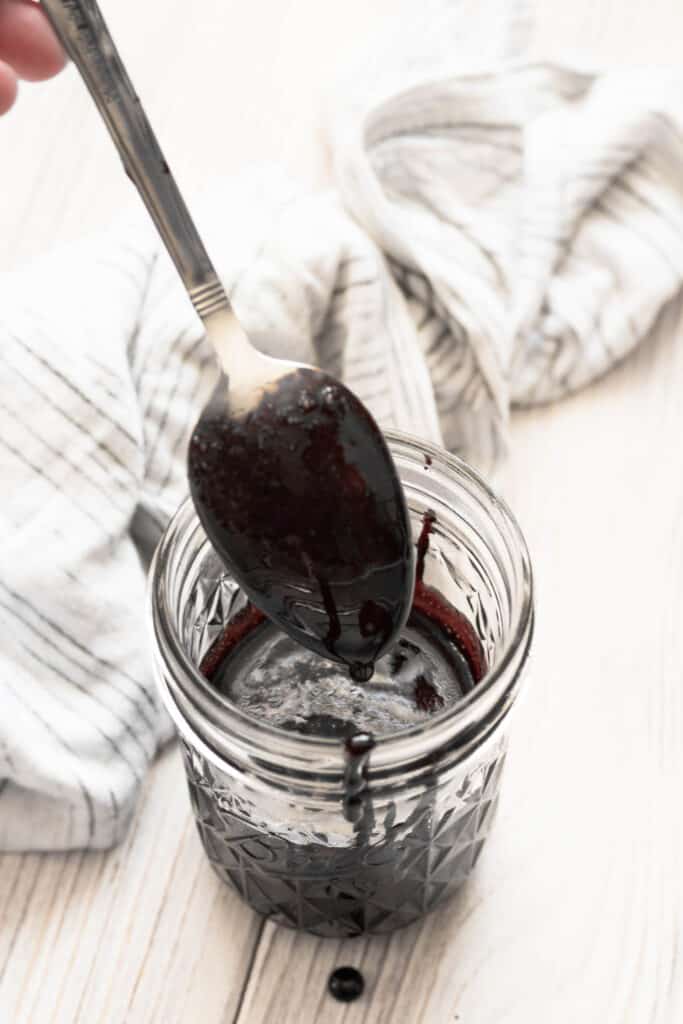
Recipe Origins
The History of Balsamic Vinegar
If you’ve never learned about balsamic vinegar, I suggest taking some time to read this passage… The process of making this stuff is so dang impressive!
Balsamic vinegar dates back to 1046, when it was given to Emperor Enrico III of Franconia as a gift!
During the Middle Ages, it was used as a cure-all medicine and as a disinfectant, even being drunk by the rich as a remedy to the plague!
Throughout the years, balsamic has found its place in many familial traditions. In the past, new barrels of balsamic vinegar were begun at the birth of a child and given away on their wedding day.
Today, we know it as the delicious stuff we love to dip our bread in, pour onto salads, and serve with veggies.
How is Balsamic Made?
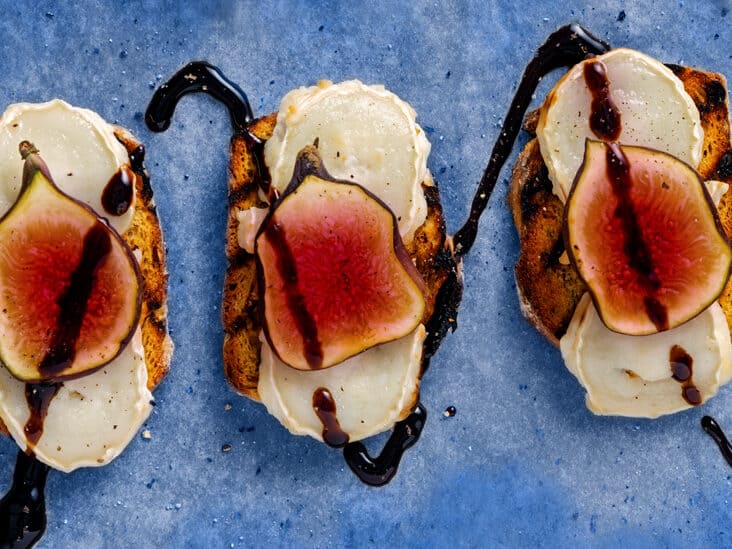
Balsamic Vinegar goes through an intense process before it even hits your table at home.
It begins with pressing the juice from white sweet grapes that are boiled into a syrup. They are cooked in a copper cauldron until the liquid inside reduces down. The result is called grape “must”.
From here, the must is placed into large wooden barrels. While in the barrels, the balsamic loses some liquid due to the porousness of the wooden barrels, and therefore sweetens and thickens.
Each year, the balsamic is transferred to a smaller barrel, where it takes in the different flavors of each different wood that it comes into contact with.
A “young” balsamic has gone through this process for 5 years, whereas some of the oldest balsamics are still aging– 150 years later!
You can use balsamic vinegar in the ways listed above, but another wonderful way to use it? Turn it into a Balsamic Glaze.
I love this stuff on ANYTHING. It is sweet and thick and adds the perfect amount of flavor to pretty much any meal! Keep on reading for instructions and best practices for making your own glaze.
Why Make this Recipe
- Easy to Throw Together On the Spot: Think that one of your meals would taste even better with a balsamic drizzle on top? Throw it together in about 20 minutes. No extra runs to the grocery store!
- One Ingredient: You truly only need one ingredient to make this simple sauce (though the brown sugar can be added as well). How awesome is that?!
- Amp Up Your Meals: The other night, I made a dinner of chicken breast with a sweet pineapple salsa. It was delicious, but at the last moment, I decided it needed a touch of tartness. I took out my balsamic and quickly reduced it to glaze while the chicken was cooking. By the time the chicken was done, so was the glaze. Suddenly, our meal went from home-chef ameature to restaurant level at the drop of a hat!
What Do I Need to Make this Recipe?
Ingredients
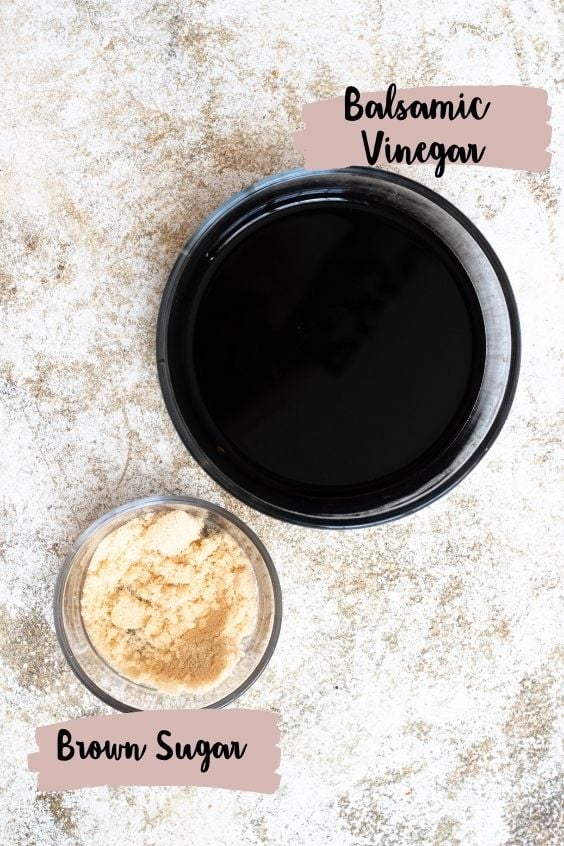
- Balsamic Vinegar: True balsamic vinegar is aged for over 12 years in the Modena and Reggio Emilia areas of Italy. You can use authentic balsamic from these regions to make this recipe, but you can also find more easily accessible balsamic vinegar in your grocery store. Use whatever kind you’d like!
- Brown Sugar: The brown sugar in this recipe is optional, though I do enjoy the extra touch of sweetness that it adds. Balsamic glaze naturally sweetens as it forms, so you will have a sweet glaze without the sugar, but can add the sugar for an extra touch.
Tools
- Small Pan: I love my nonstick pots and pans set from Cuisinart. I use the smallest pan in the set.
- Wooden Spoon: Any wooden spoon will work! You will use this as a way to test and see if your balsamic glaze is thick enough.
How to Make Balsamic Glaze from Scratch

Add the brown sugar and the vinegar in a small pot and whisk to combine. Put the pot on the stove over medium heat, stirring frequently.
Bring the balsamic to a simmer, and then turn the heat to low. Allow the balsamic to simmer for about 20 minutes, or until it has reduced to about ½ of a cup.
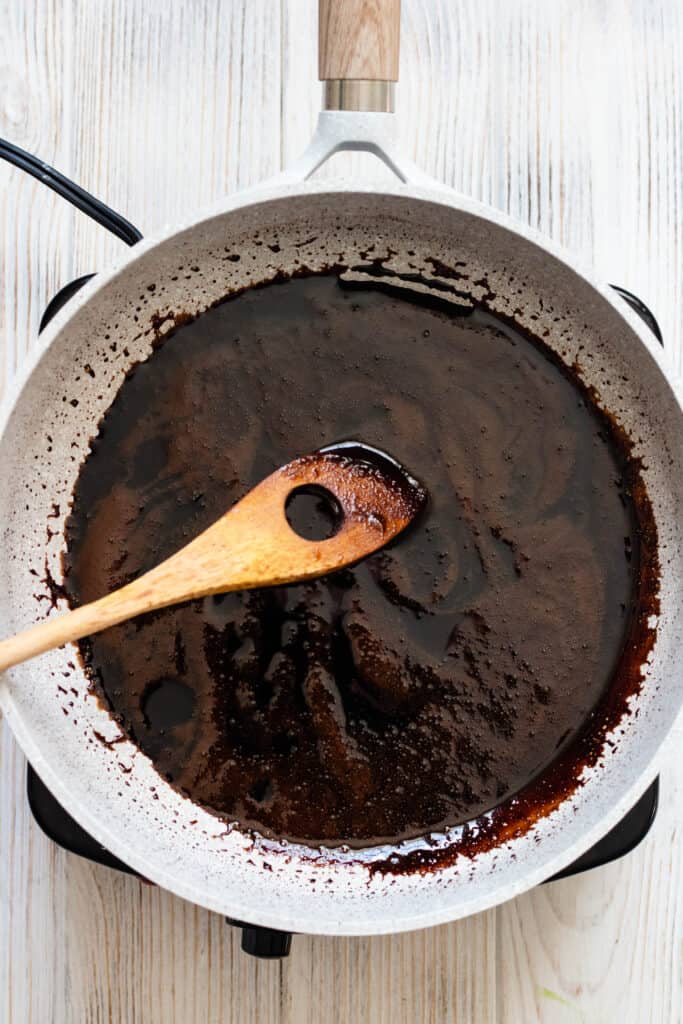
You will know that your glaze is ready to serve when it easily coats the back of a spoon.
Remove from the heat and allow to cool before transferring with an airtight container. Enjoy!
Expert Tips
- If you over thicken your balsamic glaze and it begins to harden as it cools, simply heat it up to thin it out. Then add a bit of water into it so that it stays more pourable in the future.
- You can also sweeten this recipe using honey instead of brown sugar if you’d prefer!
- Keep in mind that the cheaper the balsamic that you use, the longer it will take for it to reduce.
- If you can, I’d recommend opening some windows before beginning to cook down the glaze. The balsamic scent is very strong, and will likely make your house smell for a day or two if windows are not opened!
Recipe FAQs
What is the Difference Between Balsamic Vinegar and Balsamic Glaze?
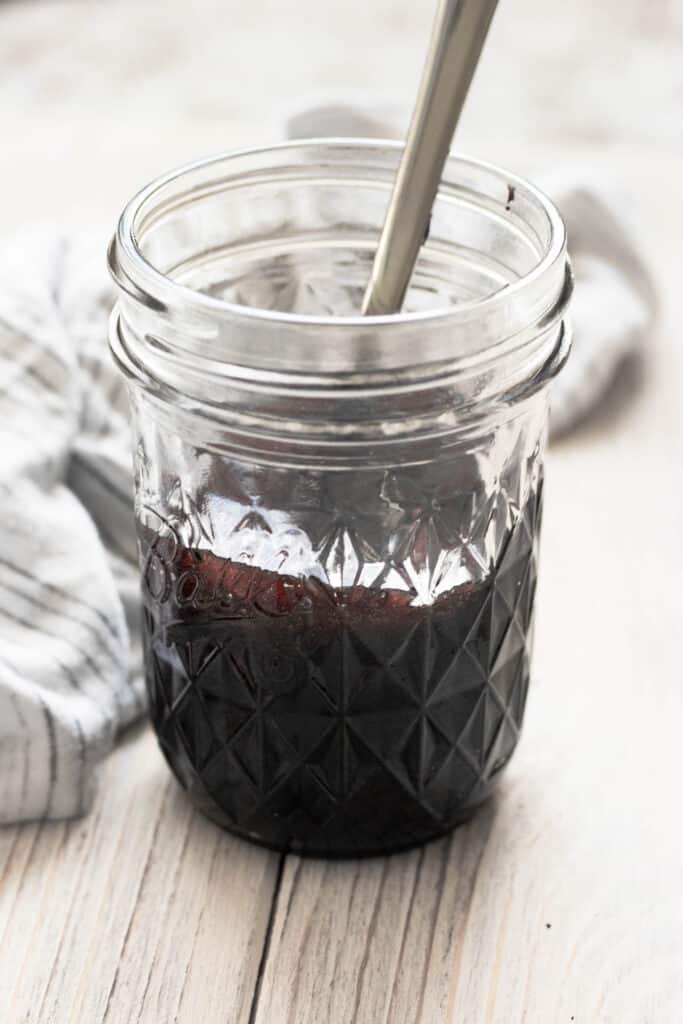
Balsamic Glaze is a cooked down and sweetened version of Balsamic Vinegar. By cooking balsamic vinegar at a simmer, the water evaporates out of the vinegar, leaving the glaze thicker and sweeter than balsamic vinegar.
What Should I Serve it With?
Balsamic glaze is delicious when served with almost anything.
Roasted vegetables? This sauce would be delicious.
A typical dish where balsamic is common is, of course, on caprese salad!
It would also be delightful served over chicken (especially with pineapple salsa), or even on a Margherita Pizza.
Does Balsamic Glaze Need to Be Refrigerated?
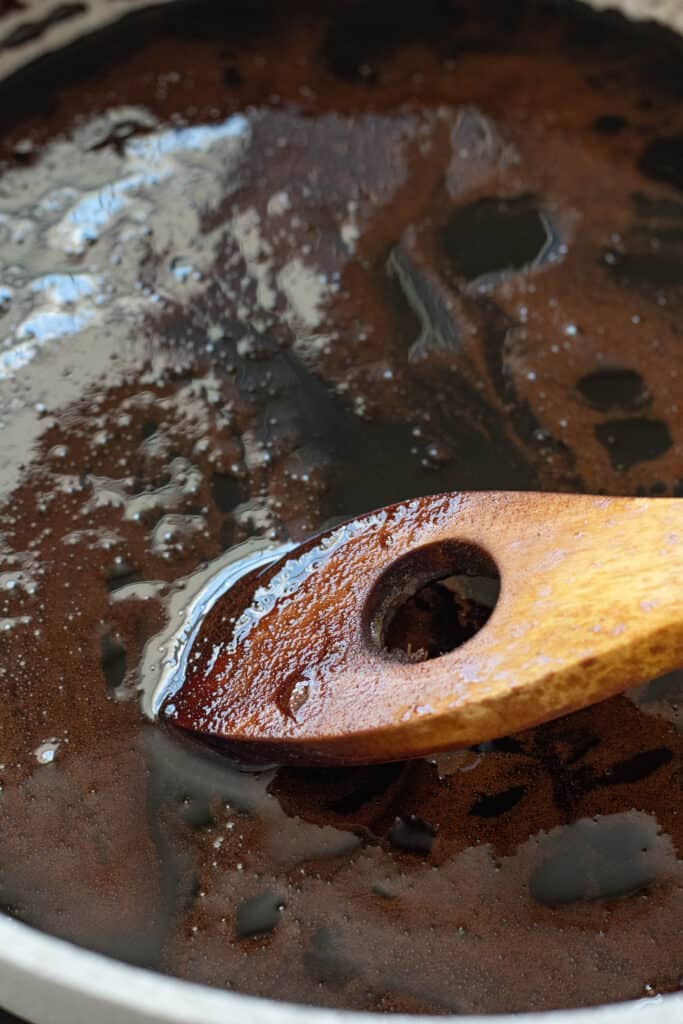
Some websites will tell you no, but I think it’s always a good idea to refrigerate your glaze. You can store it in an airtight container (I used a small mason jar), and keep it in the fridge for a few weeks.
By putting your balsamic in the fridge, it will most likely harden. You can simply place it in the microwave and heat it up (making it a pourable texture again) before serving.
Did you enjoy this recipe for How to make Balsamic Glaze? If so, make sure to check out these other recipes I picked out just for you:
- Lemon Tahini Sauce
- Andalouse Sauce from Belgium
- Peanut Sauce from Brunei
- Spicy Tomato Sauce from Eritrea
- Sweet and Sour Sauce from China
- Parsley Bechamel from Denmark
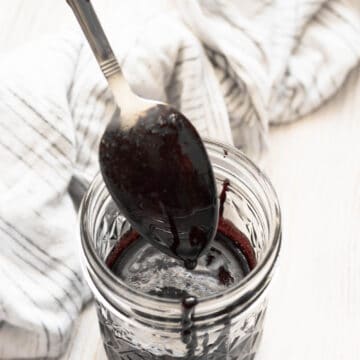
Balsamic Reduction Glaze
Ingredients
- 1 ½ cups balsamic vinegar
- 2 tbsp brown sugar
Instructions
- Add the brown sugar and the vinegar in a small pot and whisk to combine. Put the pot on the stove over medium heat, stirring frequently.
- Bring the balsamic to a simmer, and then turn the heat to low. Allow the balsamic to simmer for about 20 minutes, or until it has reduced to about ½ of a cup.
- You will know that your glaze is ready to serve when it easily coats the back of a spoon.
- Remove from the heat and allow to cool before transferring with an airtight container. Enjoy!
Notes
- Balsamic Vinegar: True balsamic vinegar is aged for over 12 years in the Modena and Reggio Emilia areas of Italy. You can use authentic balsamic from these regions to make this recipe, but you can also find more easily accessible balsamic vinegar in your grocery store. Use whatever kind you’d like!
- Brown Sugar: The brown sugar in this recipe is optional, though I do enjoy the extra touch of sweetness that it adds. Balsamic glaze naturally sweetens as it forms, so you will have a sweet glaze without the sugar, but can add the sugar for an extra touch.
- If you over thicken your balsamic glaze and it begins to harden as it cools, simply heat it up to thin it out. Then add a bit of water into it so that it stays more pourable in the future.
- You can also sweeten this recipe using honey instead of brown sugar if you’d prefer!
- Keep in mind that the cheaper the balsamic that you use, the longer it will take for it to reduce.
- If you can, I’d recommend opening some windows before beginning to cook down the glaze. The balsamic scent is very strong, and will likely make your house smell for a day or two if windows are not opened!


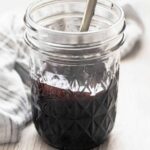
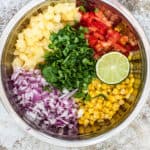

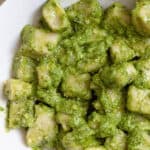
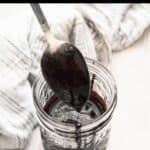
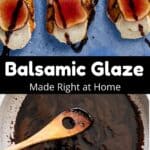

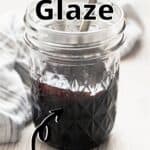
Leave a Reply